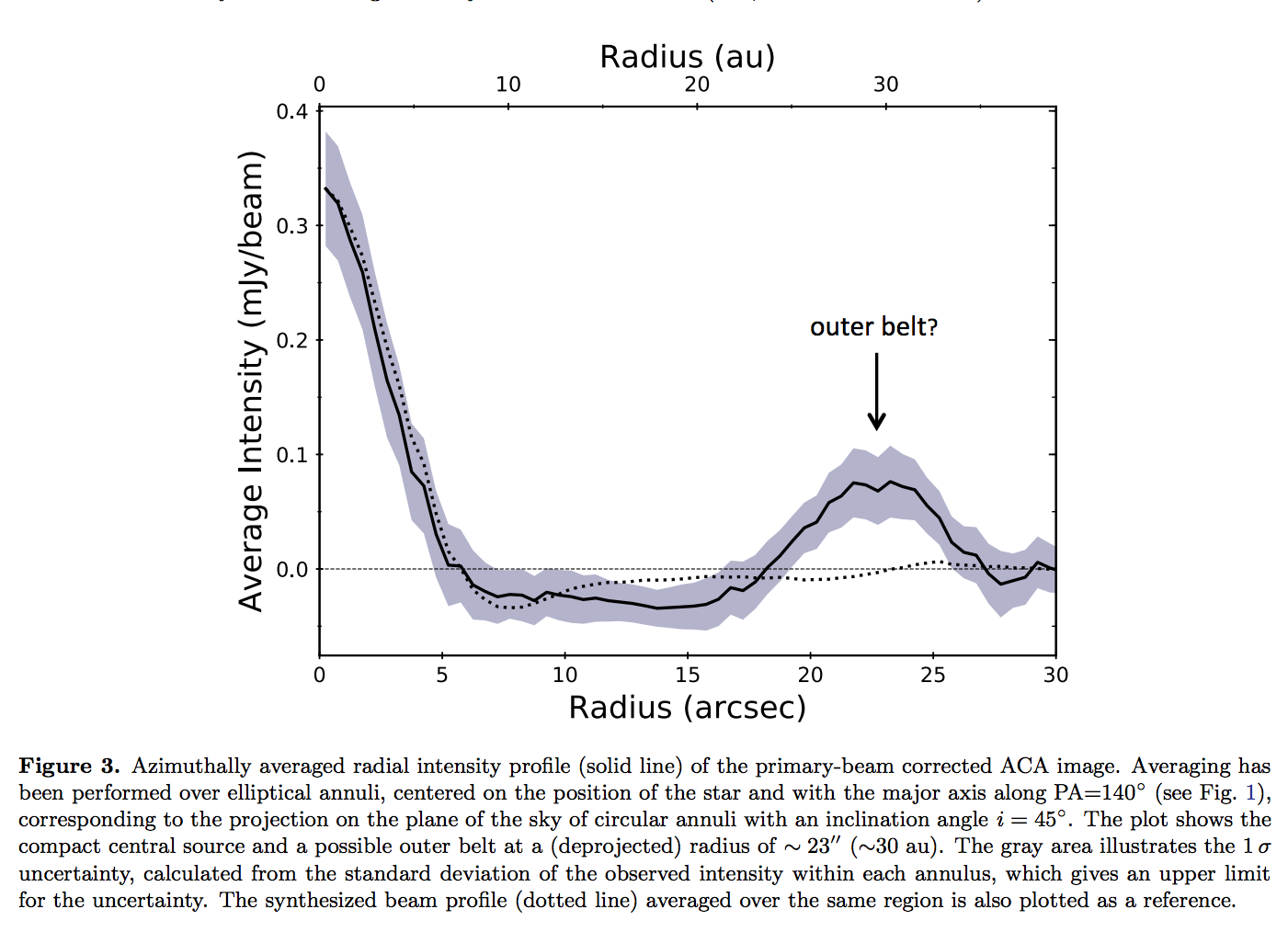Proxima Centauri, the star closest to our Sun, is known to host at least one terrestrial planet candidate in a temperate orbit. Here the European Space Agency reports the ALMA detection of the star at 1.3 mm wavelength and the discovery of a belt of dust orbiting around it at distances ranging between 1 and 4 au, approximately. Given the low luminosity of the Proxima Centauri star, they estimate a characteristic temperature of about 40 K for this dust, which might constitute the dust component of a small-scale analog to our solar system Kuiper belt.
The estimated total mass, including dust and bodies up to 50 km in size, is of the order of 0.01 Earth masses, which is similar to that of the solar Kuiper belt. Our data also show a hint of warmer dust closer to the star. They also find signs of two additional features that might be associated with the Proxima Centauri system, which, however, still require further observations to be confirmed: an outer extremely cold (about 10 K) belt around the star at about 30 au, whose orbital plane is tilted about 45 degrees with respect to the plane of the sky; and additionally, they marginally detect a compact 1.3 mm emission source at a projected distance of about 1.2 arcsec from the star, whose nature is still unknown.
In 2016, astronomers discovered that an exoplanet roughly the size of Earth orbits around Proxima Centauri in its habitable zone.

Brian Wang is a Futurist Thought Leader and a popular Science blogger with 1 million readers per month. His blog Nextbigfuture.com is ranked #1 Science News Blog. It covers many disruptive technology and trends including Space, Robotics, Artificial Intelligence, Medicine, Anti-aging Biotechnology, and Nanotechnology.
Known for identifying cutting edge technologies, he is currently a Co-Founder of a startup and fundraiser for high potential early-stage companies. He is the Head of Research for Allocations for deep technology investments and an Angel Investor at Space Angels.
A frequent speaker at corporations, he has been a TEDx speaker, a Singularity University speaker and guest at numerous interviews for radio and podcasts. He is open to public speaking and advising engagements.


Seems to me that according to theories, planets should seldom be alone, given they are born from a multitude of pebbles and smaller bodies across big swaths of the space encircling a star.
There must be several bodies of different sizes after this process settles down.
Therefore any star with planets ought to have several of them, plus asteroids, comets and such. We simply can’t see the smaller ones.